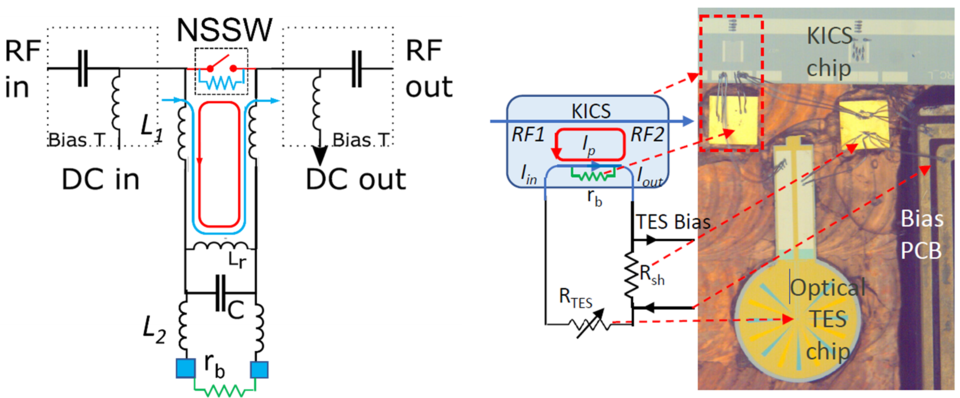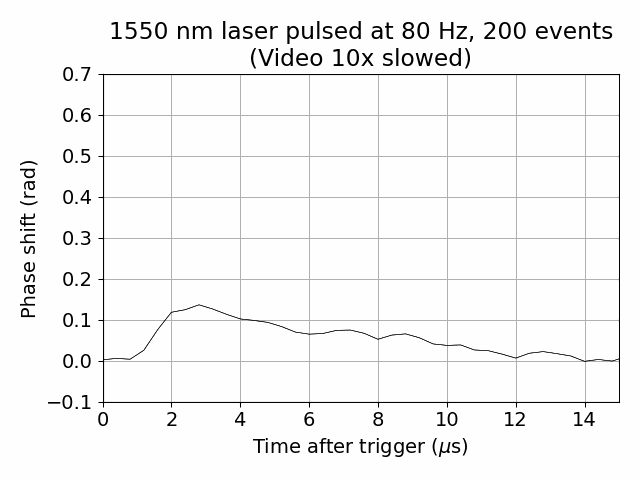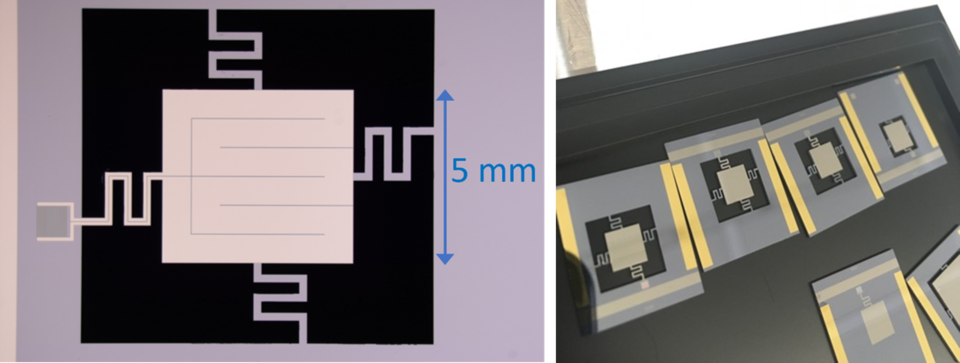Summary
The Kinetic Inductance Spectrophotometry Project is developing novel superconducting detector and readout technologies targeting next generation large-scale hyperspectral imaging applications.
Description
Within this application space, the transition-edge sensor (TES) microcalorimeter is the most mature technology, with demonstrated x-ray energy resolving capabilities of better than a part per thousand. Current TES readout techniques require the use of superconducting quantum interference device (SQUIDs), and while a number of SQUID-based multiplexing techniques have been demonstrated for TES microcalorimeters, the readout of very large arrays and of detectors with exceptionally fast time constants has proved difficult. The Kinetic Inductance Spectrophotometry Project is actively exploring solutions to these issues through the development of more intrinsically scalable superconducting resonator based calorimeters and readouts.
Major Accomplishments
Kinetic Inductance Current Sensor (KICS)
We have developed the kinetic inductance current sensor (KICS), a superconducting readout technology that replaces the SQUID in the TES readout circuit. The KICS makes use of a superconducting resonator with a thin and narrow inductor, allowing us to exploit the large nonlinear current dependence of the kinetic inductance in a superconductor. This kinetic inductance nonlinearity is described by
$$L_{KI} (I)=L_{KI} (0)\left(1+\frac{I^2}{I_{*,2}^2}+\frac{I^4}{I_{*,4}^4} +⋯\right),$$
where LKI is the current dependent kinetic inductance, I is the current in the inductor, and I* is a current that is characteristic of the magnitude of the nonlinearity. Changes in the input current change the kinetic inductance, and due to the resonator geometry, these changes in turn shift the resonant frequency of the resonator. When coupled to a TES or similar device, the current pulses that are produced during a photon event are measured through the shift in the KICS resonant frequency, with the shift being proportional to the energy of the photon. The KICS architecture also employs a superconducting switch, which is used to trap a persistent current in the resonator. This persistent current biases the KICS into a high responsivity regime without the need of an active current source, greatly improving noise performance. Figure 1 shows the operation of a KICS device for TES readout.

We have demonstrated the performance of a prototype KICS device through the readout of a TES calorimeter optimized for near-unity quantum efficiency at 1550 nm. Here, a 1550 nm laser diode is pulsed such that a small number of single photons arrive at the detector simultaneously. These photon events temporarily shift the resonant frequency of the KICS, with larger numbers of photons producing larger frequency shifts, as shown in Figure 2. In terms of energy resolution, this prototype KICS readout has already matched the resolution observed with a SQUID readout of the same device.

Charged Particle Thermal Kinetic Inductance Detector (CP-TKID)
The charged particle thermal kinetic inductance detector (CP-TKID) is a variation of the more standard kinetic inductance detector (KID). In a KID, photons are directly absorbed in the inductor of a superconducting resonator, breaking Cooper pairs and shifting the resonant frequency of the KID. More energetic photons break more Cooper pairs, resulting in larger frequency shifts. In a CP-TKID, on the other hand, photons and/or particles are absorbed by an isolated absorber that is only weakly thermally coupled to the substrate. Absorption events raise the temperature of this island, which in turn breaks Cooper pairs in a superconducting inductor lithographically patterned on top of the island. This allows the KID to act as a thermal device much like the TES while preserving the KID ease of readout. Figure 3 shows the thermal model and operation of a CP-TKID.

We have been exploring CP-TKIDs for applications in quantum information science and nuclear physics, with a targeted photon/particle energy range of 10s of keV to a few MeV. Figure 4 shows devices fabricated for these programs, with the absorber sizes being relatively large to provide adequate sensitivity and stopping power for the highly energetic absorption events. Measurements are currently being performed to probe the radiation background in an environment that is representative of a superconducting quantum computer to study potential sources of qubit decoherence. Future measurement plans involve the use of the NIST Center for Neutron Research (NCNR), where large arrays of CP-TKIDs could provide insights on fundamental symmetries in nuclear physics.


